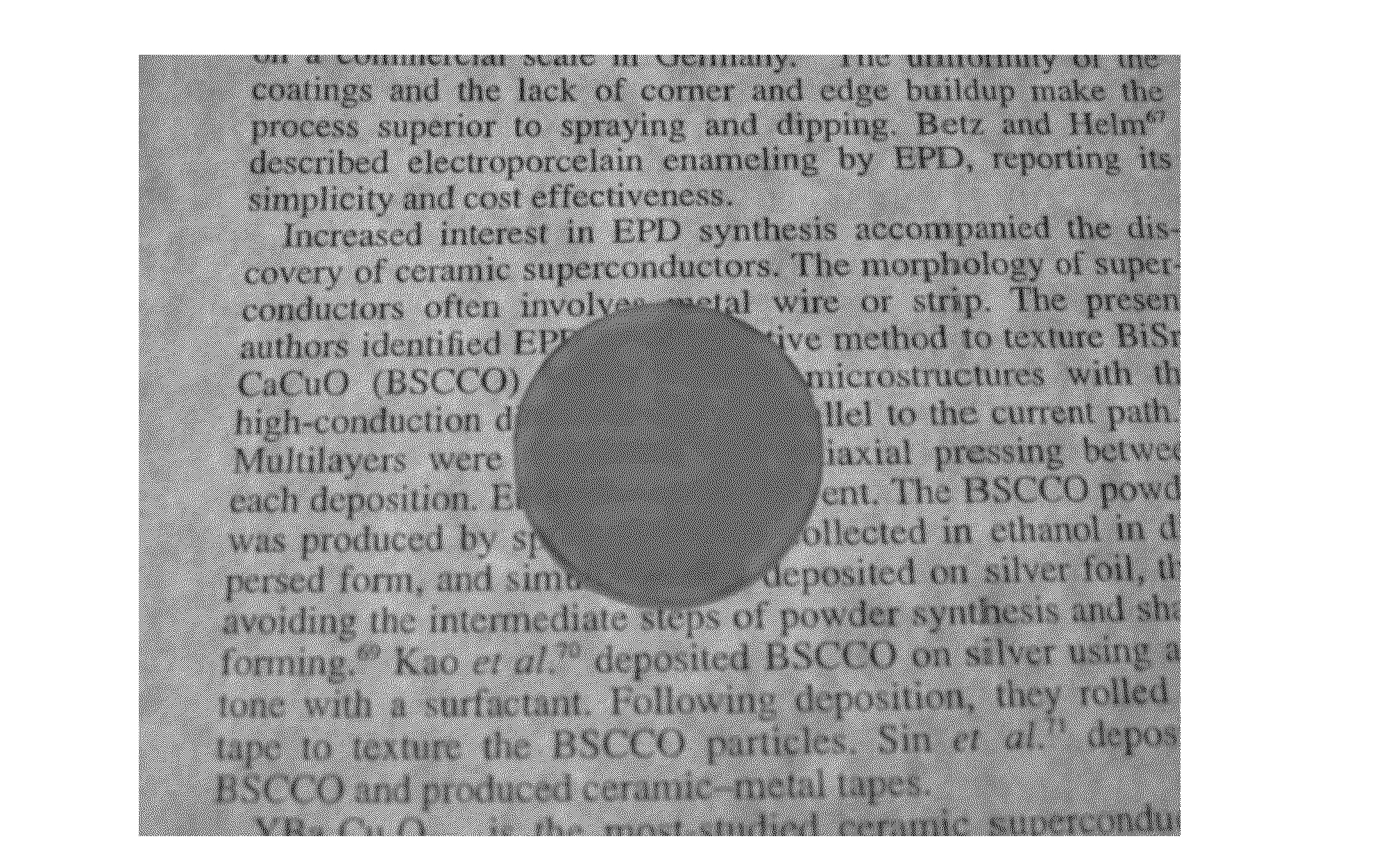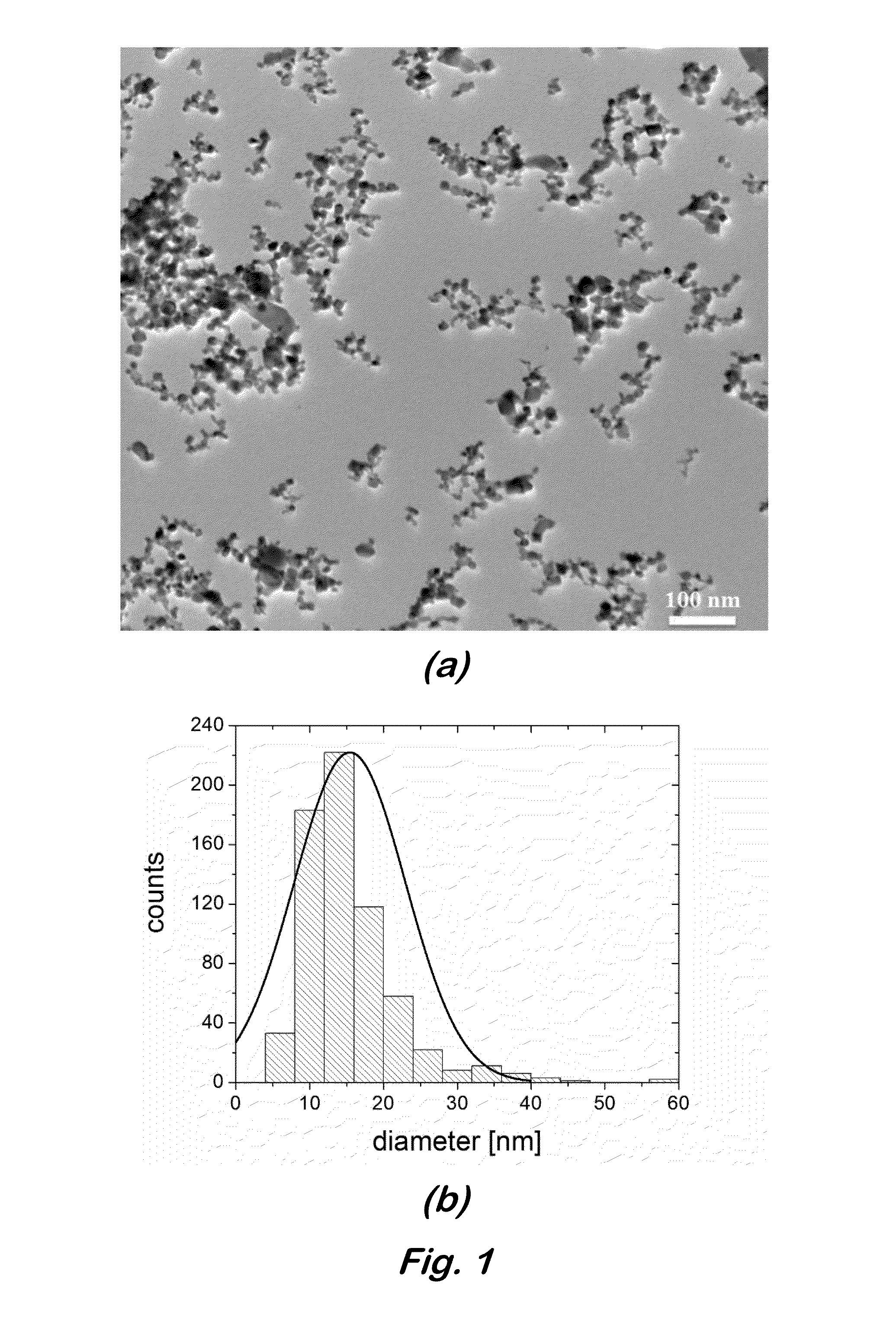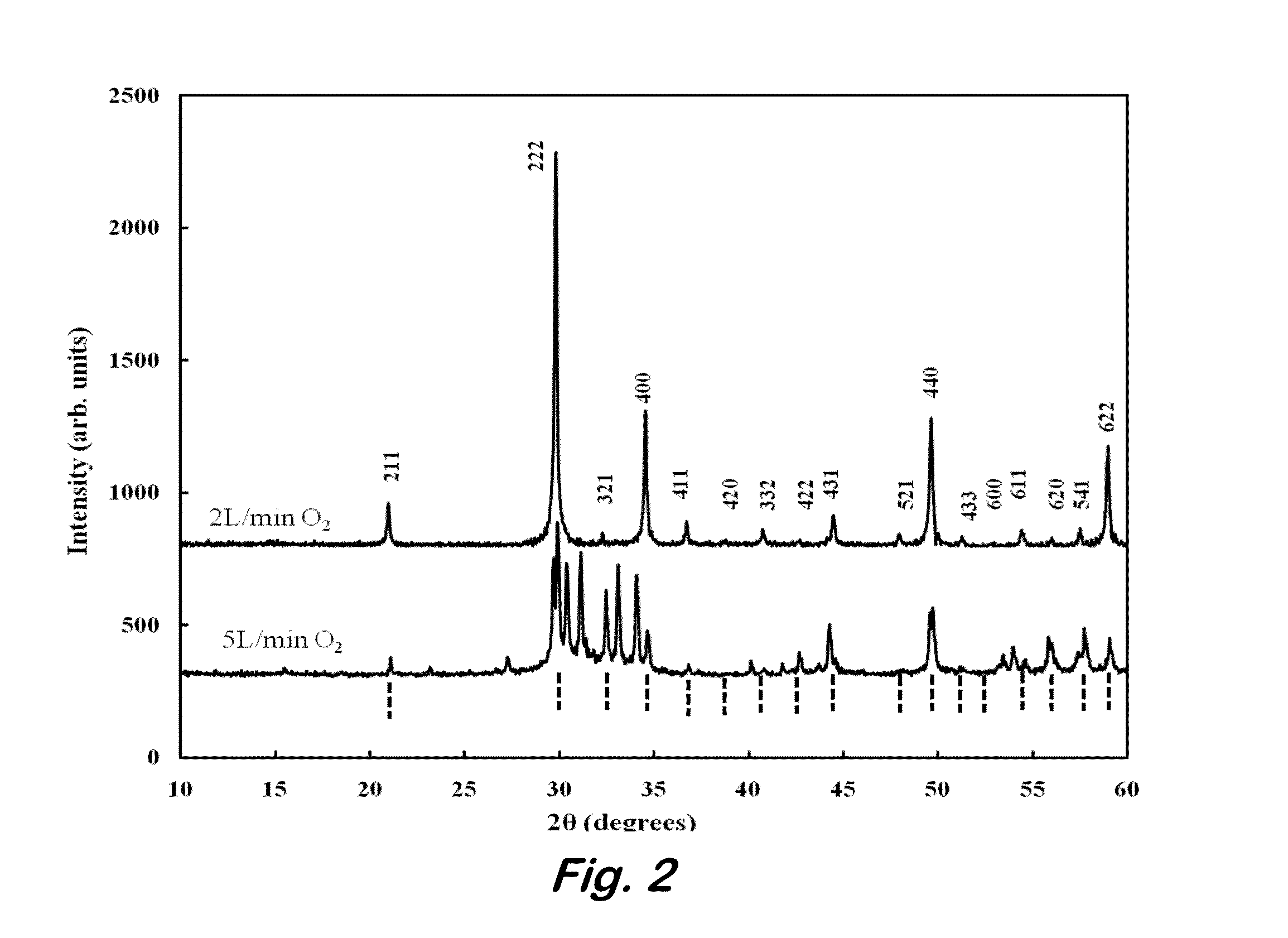FLAME SPRAY SYNTHESIS OF Lu2O3 NANOPARTICLES
a nanoparticle and nanoparticle technology, applied in the field of nanoparticles, can solve the problems of large particle size and agglomeration, failure to fabricate transparent ceramics with these high impurity levels and agglomerated powders, and time-consuming and labor-intensive processes
- Summary
- Abstract
- Description
- Claims
- Application Information
AI Technical Summary
Benefits of technology
Problems solved by technology
Method used
Image
Examples
example 1
Synthesis of the Yb3+ Doped Lu2O3
[0027]Solutions were prepared by dissolving 100 grams of 1-10% Yb(NO3)3·xH2O and Lu(NO3)3·xH2O powder precursors in 500 mL DI water. The nitrate solutions were then purified by crystallization and subsequent washes followed by filtration by passing through 0.8 μm filter media. Finally batches of 20 g of Yb3+ Lu-nitrate were dissolved in 100 mL of ethanol to give the final precursor solution.
example 2
[0028]The liquid precursor was fed through a custom built flame spray apparatus two-phase nozzle at flow rates that varied from 3-10 mL / min with the aid of an O2 dispersion gas / oxidant that had a flow rate that was varied from 2-7 L / min. All gases were supplied via mass flow controllers. Small pilot flames ignited from flowing 1.5 L / min CH4 and 3 L / min O2 forming a ring pattern were used as the flame ignition source and as a supporting flame for the larger central flame. The pilot flame ringlet surrounded a central capillary tube that sprayed the precursor solution mixed with an oxygen dispersion gas to form precursor droplets that underwent combustion in the large central flame. The powders were collected on Whatman GF 6 glass fiber filter paper mounted in a custom built water cooled stainless steel collection chimney. Both the precursor flow rate and oxygen dispersion gas flow rate were varied in order to control the material phase.
example 3
TEM of Nanoparticles
[0029]The samples were sonicated in acetone and placed drop wise on a transmission electron microscope (TEM) grid before imaging. The particle size was characterized using a JEOL JEM 2200FS transmission electron microscope working at 200 kV. The particle size distribution was obtained by using digital image analysis of TEM images using NIS Elements BR 3.2 software by Nikon. Particle surface area and equivalent diameter were characterized with BET using a Micromeritics ASAP 2010 system.
[0030]FIG. 1(a) shows a TEM image of Yb3+ doped Lu2O3 nanoparticles, with the corresponding particle size distribution given in FIG. 1(b). The mean particle diameter was found to be 15 nm. The sample was synthesized with an oxygen dispersion gas flow rate of 2 L / min and a precursor flow rate of 10 mL / min. It can be seen that the sample consists of primary particle size ranges from 20-50 nm and a low degree of agglomeration. The BET surface area of the particles was found to be 28.9...
PUM
| Property | Measurement | Unit |
|---|---|---|
| Grain size | aaaaa | aaaaa |
| Diameter | aaaaa | aaaaa |
| Volumetric flow rate | aaaaa | aaaaa |
Abstract
Description
Claims
Application Information
 Login to View More
Login to View More - R&D
- Intellectual Property
- Life Sciences
- Materials
- Tech Scout
- Unparalleled Data Quality
- Higher Quality Content
- 60% Fewer Hallucinations
Browse by: Latest US Patents, China's latest patents, Technical Efficacy Thesaurus, Application Domain, Technology Topic, Popular Technical Reports.
© 2025 PatSnap. All rights reserved.Legal|Privacy policy|Modern Slavery Act Transparency Statement|Sitemap|About US| Contact US: help@patsnap.com



